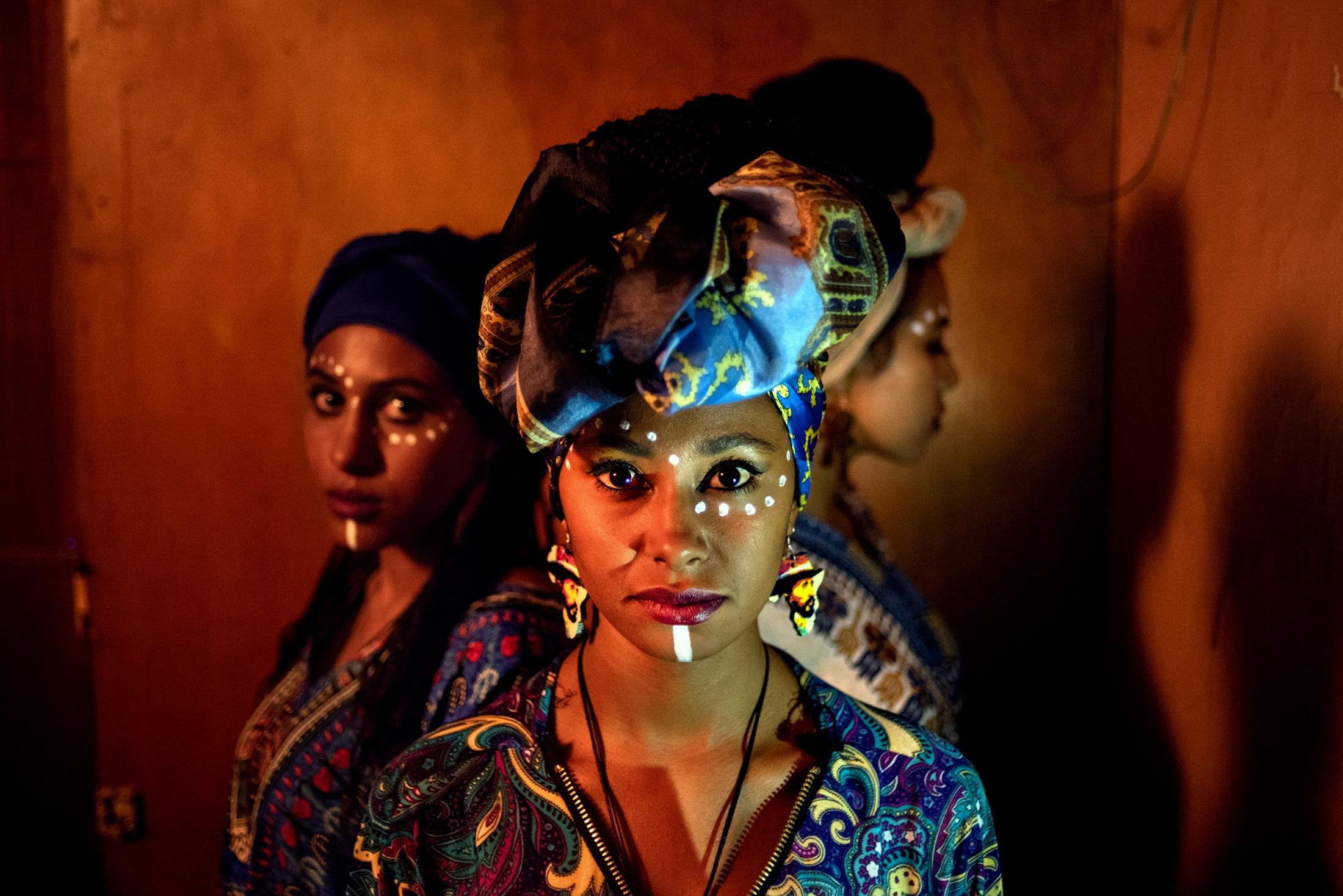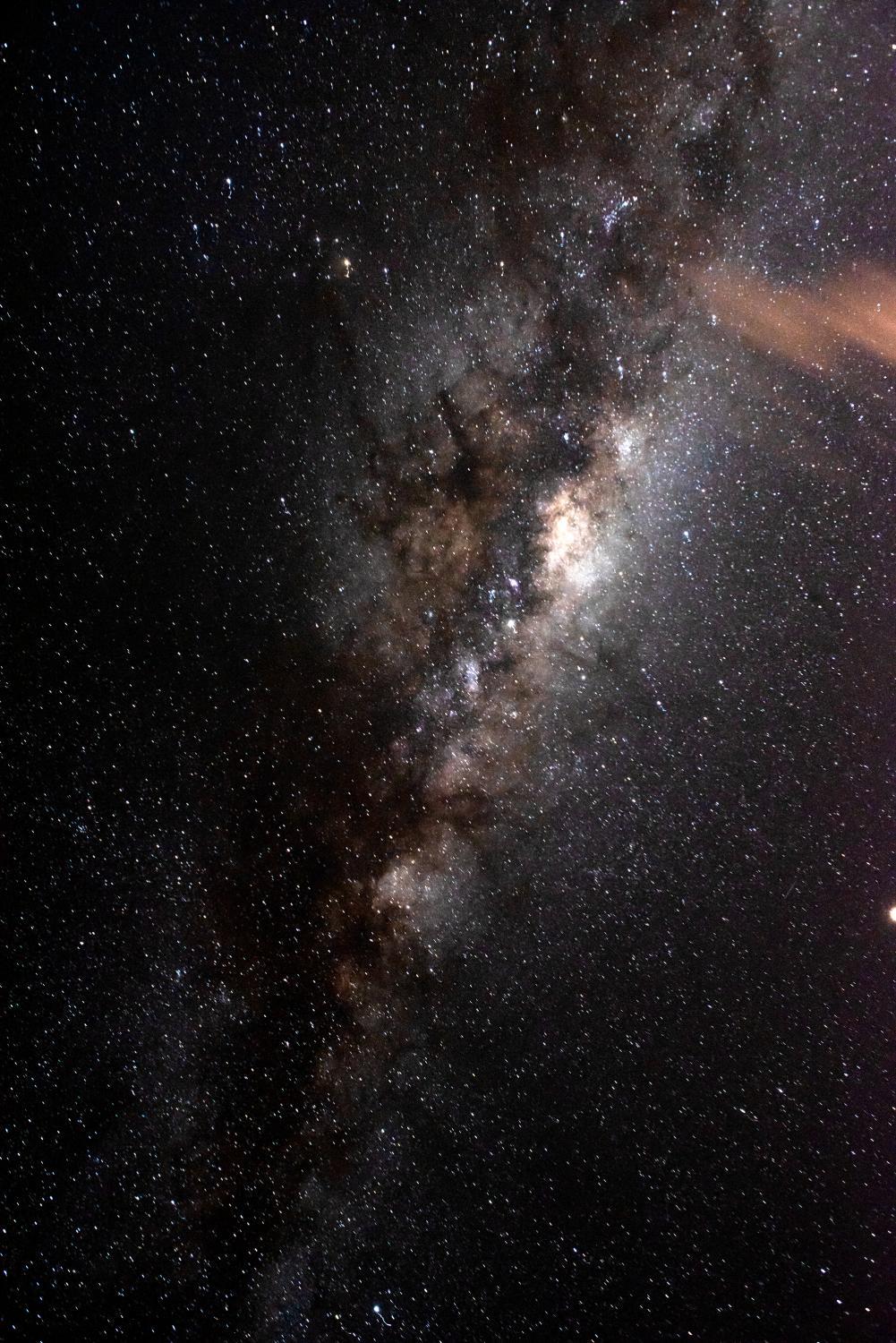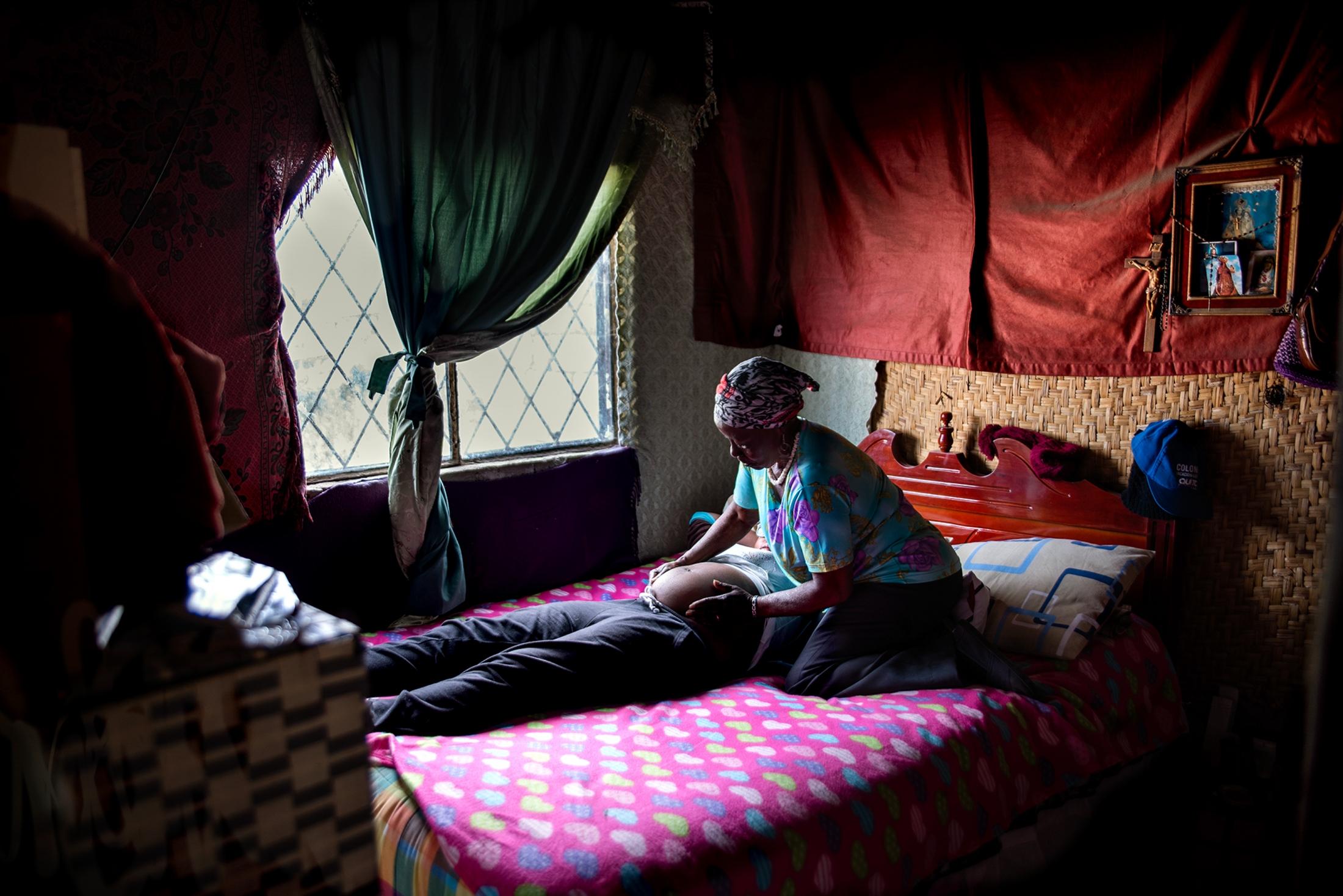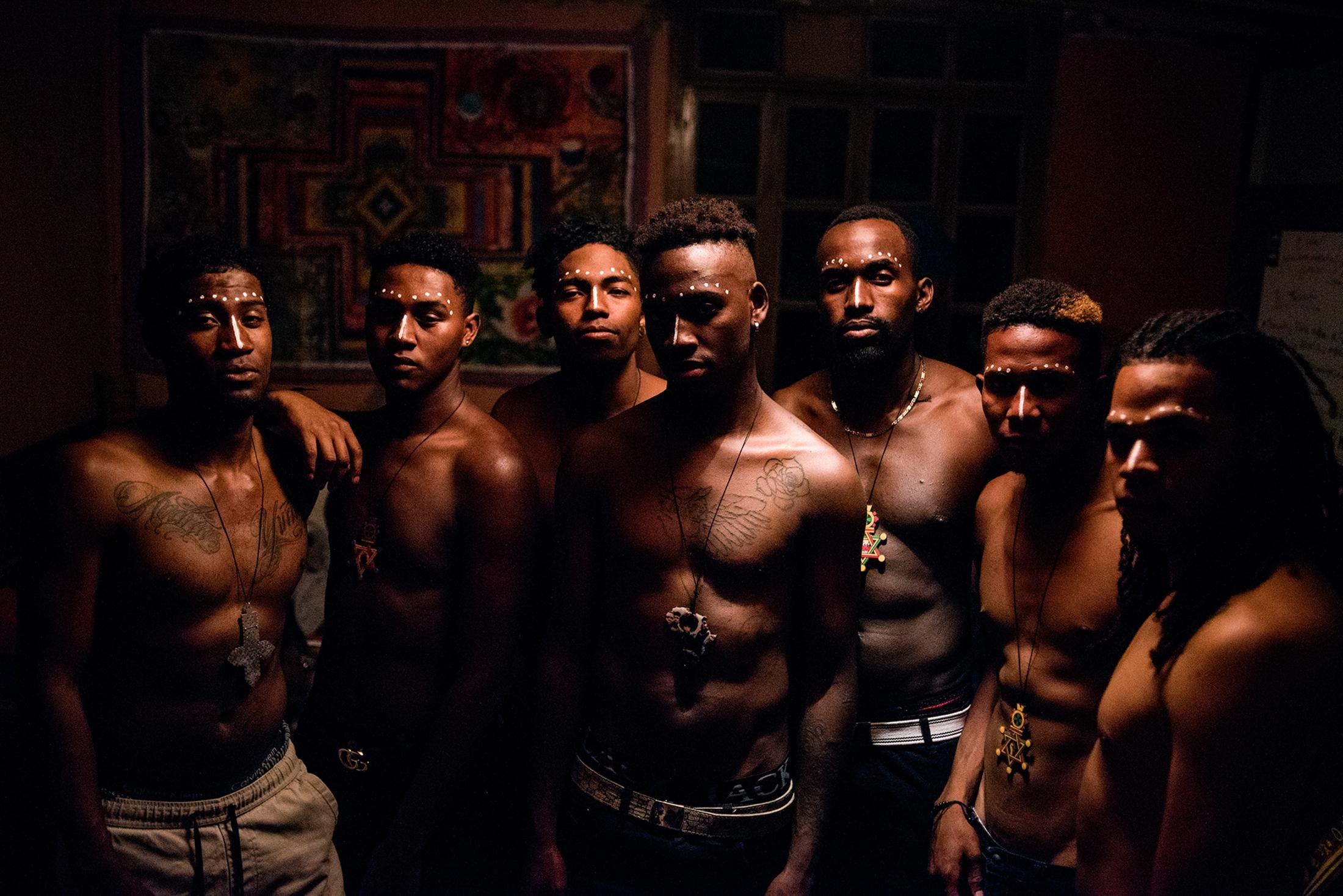Self portrait in my grandmother’s garden. Quito-Ecuador. 2020. Photo by Johis Alarcón.
Visura: A Conversation with Johanna 'Johis' Alarcón

Cameron Peters for Visura
based in Brooklyn
Johanna 'Johis' Alarcón is a freelance photojournalist and visual storyteller based in Ecuador. Her work focuses on social justice, human rights, identity and gender-related issues. She is a National Geographic Explorer and member of several collectives, including Ayün Fotógrafas, Fotoféminas, Women Photograph and Diversify Photo.
Alarcón recently published a new photo book titled, I am black because the sun looked at me, which presents a visual documentation of the intergenerational stories and spirituality of the maroon sisters and African-descent women who survived slavery in Latin America. The book focuses on the women's continued resistance, resilience, and protection of the region today.
Alarcón is the 2023 World Press Photo South America Winner (Open Format).
This interview has been edited for clarity and length.
Roxan Jaramillo, Tamia Jaramillo and Mishell Borja, members of the pan-African activist group Addis Ababa pose for a portrait with their turbans, ancestral crowns, symbolizing their African heritage. Quito-Ecuador 2018. Photo by Johis Alarcón.
You recently published the series Cimarrona as a book titled I am black because the sun looked at me. How did you find the story? Or did the story find you?
Johis Alarcón: This story found me, in a way.
I started working on this story drawing on my own experiences with incarceration. On the one hand, I was working a lot in jails and had an incarcerated family member who was facing issues in prison.
At the time, I was giving hip-hop workshops to prisoners. I was aware of the injustices that took place inside prisons. I began considering what freedom means and how the system creates stereotypes about prisoners, and how these conceptions are affecting their lives.
During a drum circle in one of the workshops, we talked about the sound of the drums. One friend reflected on how the sound of the drum is the same as the sound of the heart, and, how that sound came from Africa.
I started this project with my friend, Karla Viteri, an Afro-descendent woman part of the Pan African Movement, an Afro-descendant movement that fights against racism and promotes black power in the world.
She told me, “You are so lucky because you always have your mom. And I never stick with my mom, Africa, because all of my people were obligated to move to this place. And my own way to stay in touch with my mom is through spirituality.”
During this moment, I decided to investigate the world of the cimarrona: how these women find their freedom and create a new legacy of femininity, not only for black women but for everyone.
In Quito, I started with my friend and her friends, as well as their families. Throughout the years, I traveled across Ecuador to find their ancestors.
---------------
Johis Alarcón: This story found me, in a way.
I started working on this story drawing on my own experiences with incarceration. On the one hand, I was working a lot in jails and had an incarcerated family member who was facing issues in prison.
At the time, I was giving hip-hop workshops to prisoners. I was aware of the injustices that took place inside prisons. I began considering what freedom means and how the system creates stereotypes about prisoners, and how these conceptions are affecting their lives.
During a drum circle in one of the workshops, we talked about the sound of the drums. One friend reflected on how the sound of the drum is the same as the sound of the heart, and, how that sound came from Africa.
I started this project with my friend, Karla Viteri, an Afro-descendent woman part of the Pan African Movement, an Afro-descendant movement that fights against racism and promotes black power in the world.
She told me, “You are so lucky because you always have your mom. And I never stick with my mom, Africa, because all of my people were obligated to move to this place. And my own way to stay in touch with my mom is through spirituality.”
During this moment, I decided to investigate the world of the cimarrona: how these women find their freedom and create a new legacy of femininity, not only for black women but for everyone.
In Quito, I started with my friend and her friends, as well as their families. Throughout the years, I traveled across Ecuador to find their ancestors.
---------------
The nighttime sky along the mountains of Ecuador’s Chota Valley, where enslaved Africans arrived in the 16th century.La Loma, 2018. Photo by Johis Alarcón.
Nicole Gudiño, 19, plays with a cotton plant in her hair. The black slaves who came to Ecuador were forced to work in cotton fields and coal mines. For Nicole, cotton plants represent the strength of her ancestors and the strength of their blood. La Loma, 2018. Photo by Johis Alarcón.
Is there an image in the book that is fundamental to the story? And if so, can you describe it and explain why it's important?
The first image (top right) means a lot to me. The day I took this image, I was lost in Ecuador's highlands. I was searching for a black midwife when a woman appeared out of nowhere. She told me that the woman I was looking for was her mom.
So, we went to her house, where I met Nicole the girl in the picture. We discussed what blackness means to them.
This image embodies the book's concept: blood, territory, ancestors, spirituality, and future generations. Initially, it may just look like a cotton plant, but the significance lies in what it represents both for her and for all black people who live in these territories: the blood and strength of our ancestors.
---------------
The first image (top right) means a lot to me. The day I took this image, I was lost in Ecuador's highlands. I was searching for a black midwife when a woman appeared out of nowhere. She told me that the woman I was looking for was her mom.
So, we went to her house, where I met Nicole the girl in the picture. We discussed what blackness means to them.
This image embodies the book's concept: blood, territory, ancestors, spirituality, and future generations. Initially, it may just look like a cotton plant, but the significance lies in what it represents both for her and for all black people who live in these territories: the blood and strength of our ancestors.
---------------
Alba Pavón, a community leader at "Caminos a la Libertad," a neighborhood in the northwest of Quito. She emigrated to the city in 1970 from the Afro community of el Chota, Valley. Alba represents "Yemayá," the mother of all the Orishas. Alba feels identified with this Orisha because the memories of her ancestors and territory are linked with water, the river is enrooted with her childhood. Quito, 2018. Photo by Johis Alarcón.
Do you identify as a photographer or visual storyteller?
When I first started photographing, I identified as a photographer. Years later, I now identify as a visual storyteller.
---------------
What is the difference between the two in your perspective?
In the beginning, as a photographer, I focused only on the image creation process. As a visual storyteller, I focus on the whole story.
What is the story? What is the story's impact? What are the best ways to connect the story with the audience? What educational elements or processes can I incorporate into this story?
For me, photography is just the beginning, not the end. I'm not just thinking about photography. I explore other resources, like combining photography, video, and audio.
---------------
Who are your biggest influences? They can be photographers, but they don't have to be.
I am most influenced by the women in my family because they teach me how to be human. It seems to me that this is the key to my life and work. Through photography, we can connect to the real us as humans, rather than the stereotypes that have been placed on us. By doing this, we can get to know each other better behind the scenes.
---------------
Maisa Ayovi bathes in the estuary of her community Playa de Oro. The Ayovi family keeps the legacy of ancestral practices and protects the tropical forest of more than 700,000 hectares. This is the only border community where no mining or oil extraction is allowed, so the water remains clean. Playa de Oro, 2021. Photo by Johis Alarcón.
How do visuals contribute to our understanding of the past and present?
The power of photography is time. It connects historical timelines.
You can create your own vision of the world if you understand human history and relate it to real experiences. The impact of photography is the ability to tell our own stories.
---------------
The power of photography is time. It connects historical timelines.
You can create your own vision of the world if you understand human history and relate it to real experiences. The impact of photography is the ability to tell our own stories.
---------------
Zulma Espinoza, a midwife, massaging the belly of her pregnant granddaughter to reduce her pain. Black midwives preserve their knowledge and apply it in cities where many ancestral practices are threatened by modernity and globalization. Quito, Ecuador. 2018. Photo by Johis Alarcón.
What is the key to a positive collaboration?
Be honest with people. Be honest about who you are. You should be honest about what you want. If you trust in people, then people will trust in you.
Another key is to remain flexible at all times.
In my practice, I talk to the community before I go there and share references of what I'm trying to create.
For example, if I have an idea, I try to share it in a visual way. I then receive feedback from the community regarding what is and is not possible.
From there, you flow with the people and the moment. Don't be frustrated if you don't get the results you are looking for in the fields the first or second time.
---------------
Be honest with people. Be honest about who you are. You should be honest about what you want. If you trust in people, then people will trust in you.
Another key is to remain flexible at all times.
In my practice, I talk to the community before I go there and share references of what I'm trying to create.
For example, if I have an idea, I try to share it in a visual way. I then receive feedback from the community regarding what is and is not possible.
From there, you flow with the people and the moment. Don't be frustrated if you don't get the results you are looking for in the fields the first or second time.
The power of photography is that it lets you be surprised all of the time. Surprise is a way to create too.
---------------
From left to right: David García, Mateo Padilla, Kevin Bustamante, David Espinoza, Andrés Zamorano, Maberik García y Brayan Montealegre members of the pan-African activist group Addis Ababa getting ready for their presentation at Momo Cultural House. The Addis Abeba group have been claiming and keeping alive the memory of their ancestors through cultural manifestations and against the racism. Johis Alarcón. Quito, 2018. Photo by Johis Alarcón.
What are your must-haves when you're out on assignment?
When I work, I try to have two different plans. The first is my security and logistical plan. As part of that plan, I include an emergency contact, maps, food, communication, electricity, internet, light, and whether I need an assistant or security. All of these are kept in a Word document or my cell phone notes.
Whenever I work on an assignment, I also make a list of what images I need and where to find them. For example, when covering a protest, I write down which portraits or documentary pictures I need. It is also helpful for me to find someone in the community who can let me know when it is appropriate to go and whether security is in place.
---------------
When I work, I try to have two different plans. The first is my security and logistical plan. As part of that plan, I include an emergency contact, maps, food, communication, electricity, internet, light, and whether I need an assistant or security. All of these are kept in a Word document or my cell phone notes.
Whenever I work on an assignment, I also make a list of what images I need and where to find them. For example, when covering a protest, I write down which portraits or documentary pictures I need. It is also helpful for me to find someone in the community who can let me know when it is appropriate to go and whether security is in place.
---------------
Knowing what you know now, what advice would you give your younger self?
You have time. Not everything needs to happen all at once.
When you're young, you think you have the energy to do everything at the same time and always put all of you into each. This is exhausting.
There is more to my work than just photography. Now I know that I need time to process what I'm working on, so I honor that need.
Also, I am trying to find a balance between my work and personal life. This too takes time.
---------------
You have time. Not everything needs to happen all at once.
When you're young, you think you have the energy to do everything at the same time and always put all of you into each. This is exhausting.
There is more to my work than just photography. Now I know that I need time to process what I'm working on, so I honor that need.
Also, I am trying to find a balance between my work and personal life. This too takes time.
---------------








